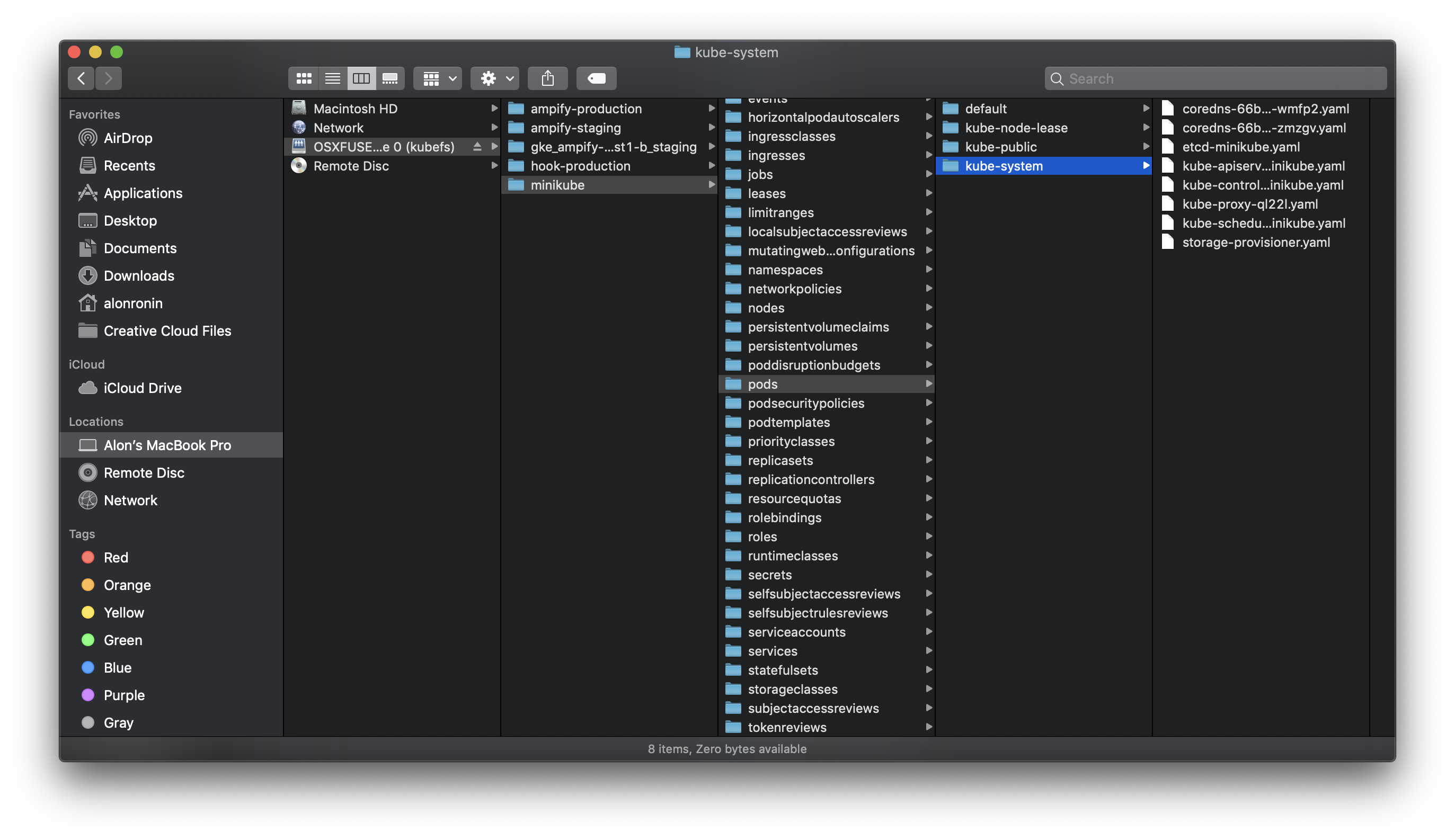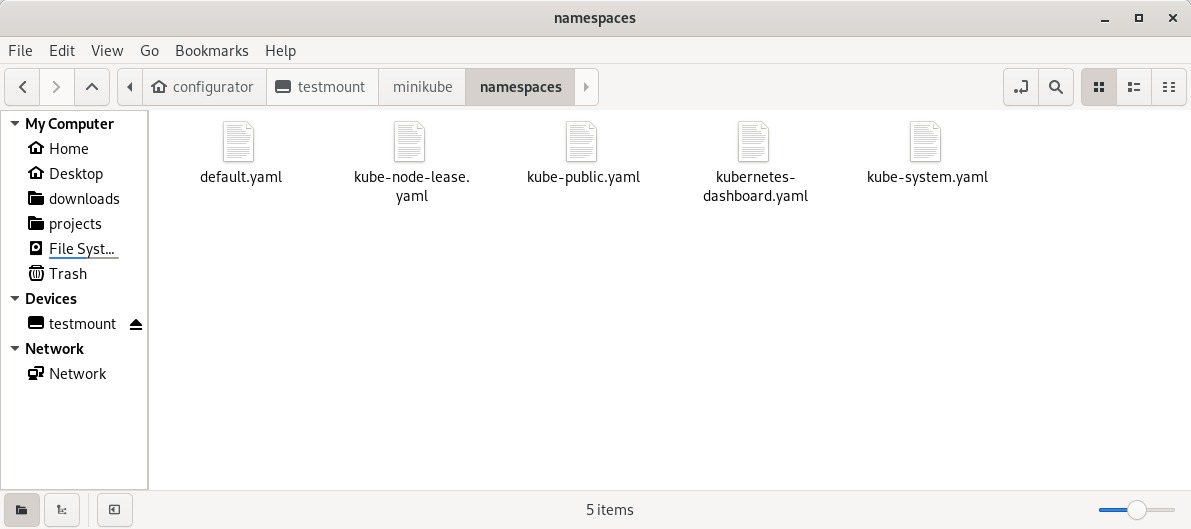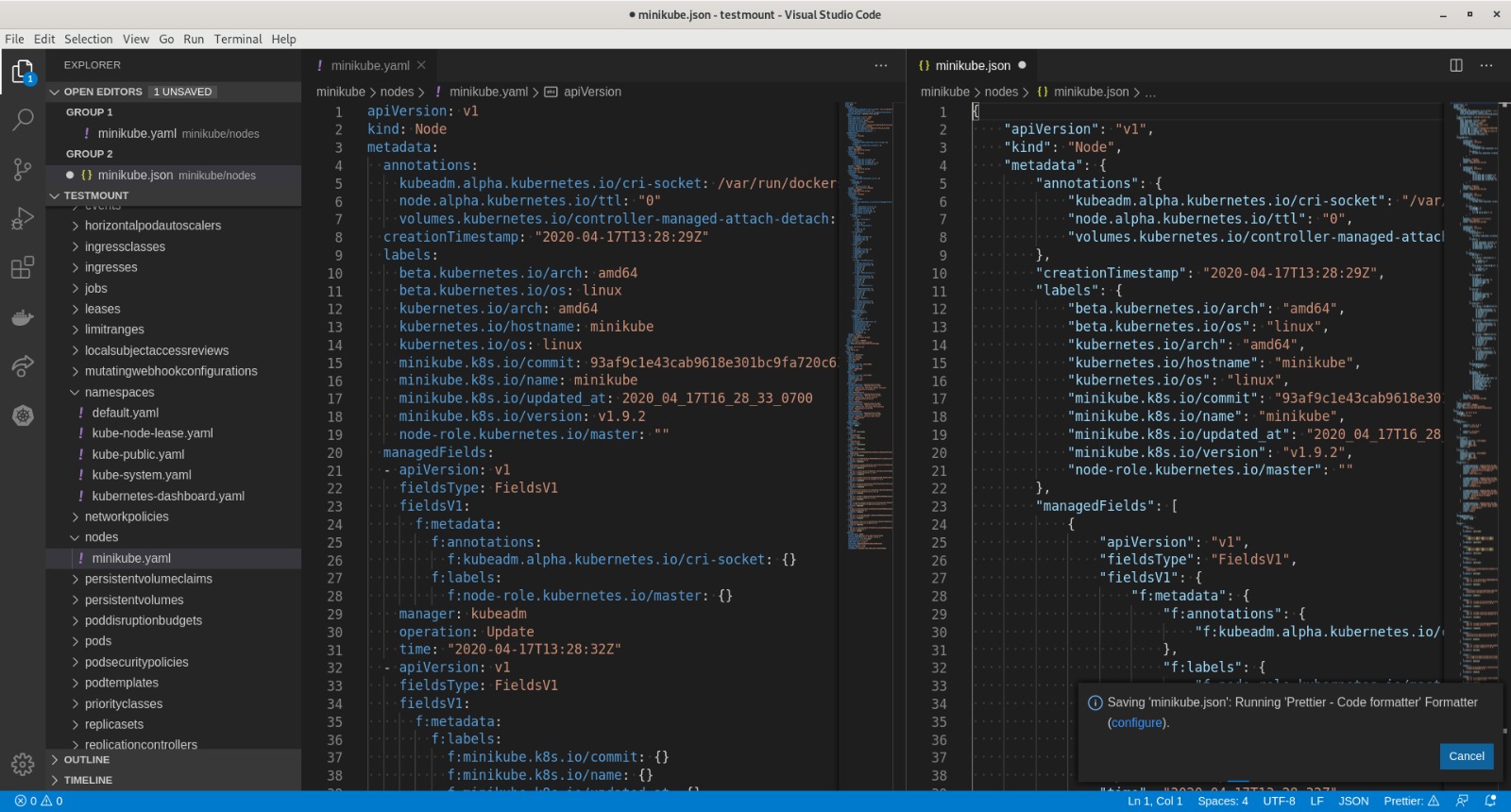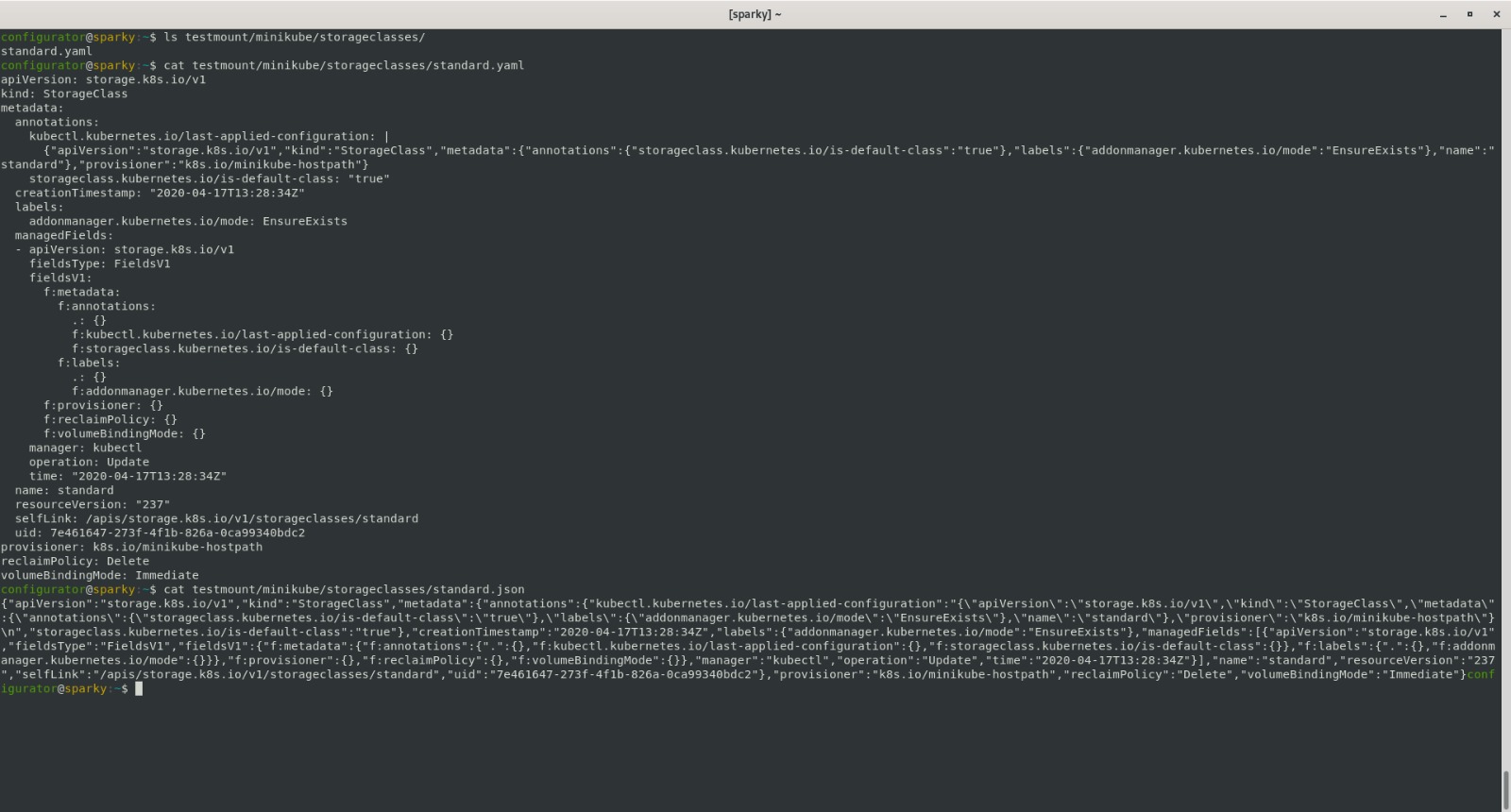Mount kubernetes's metadata object store as a file system
There are several options for downloading kubefs:
-
Download the latest release from GitHub
-
Build it directly from source using
go get:go get github.com/configurator/kubefs
Note: this is often broken because it not only gets the
masterbranch of this repository - but also all the dependencies. -
Build it directly from source by cloning this repository and running
go build .to create a
kubefsbinary -
Run it directly from source by cloning tihs repository and using
go run . [<options>] <dir>
instead of a
kubefsbinary.
For MacOS you will need osxfuse:
or you can install with brew formula:
$ brew cask install osxfuseFor Windows you will need WinFSP.
kubefs [<options>] <dir>Mounts the default kubernetes cluster onto dir.
-
-c,--kubeconfig:Like in
kubectl, you can use the--kubeconfigflag to specify an alternatekube.configfile, or pass theKUBECONFIGenvironment flag. All contexts in the passed config file will be available. -
--show-json-files:Show json files in directory listings. By default, they are there but hidden.
-
--show-yaml-files=false:Hide yaml files in directory listings. If you don't combine this with
--show-json-files, directories will all be empty. Files are still readable, just not listed in directory listings. -
--pretty-json:When opening
.jsonfiles, pretty-print them with newlines and indentation.. -
--readonlyMounts everything in read only mode so you'll feel safe (added in v0.4)
Files in the mounted directory will have the following directory structure:
/<context>- all contexts available from
kubeconfigshould appear here, allowing you to browse multiple clusters without switching withkube config use-context.
- all contexts available from
/<context>/<object-type>/<context>/<object-type>/<name>.yaml- for global objects that have no namespace, such as
nodes,clusterrolesornamespacesthemselves
- for global objects that have no namespace, such as
/<context>/<object-type>/<namespace>/<context>/<object-type>/<namespace>/<name>.yaml- for namespaced objects such as
pods,deployments, etc.
- for namespaced objects such as
All object files end in .yaml. However, the file system has a secret - the extension can be
changed to see the objects in different formats. Currently supported formats are:
.yaml.json
These extra formats will not show up in directory listings, but are available to any application that tries to read them. Omitting the extension also works and returns the default format, yaml.
-
Use
find <dir>to see an entire listing of all kubernetes objects. -
Open the directory in an IDE to look around
-
Snapshot the entire kubernetes object store by copying directory contents - though restoring isn't currently possible, you'd have a backup of each individual object.
- List / get all kubernetes objects as files
- Linux support
- Mac support
- Windows support
- Delete objects
- Edit existing objects
- Create new objects
- Support file system watchers, so IDEs know to reload the file after saving
- Connect the file system watchers to kubernetes watchers so files can be reloaded when changed on the server
- When writing files fails, add a comment to the top explaining the failure
- When reading a missing file, allow the read with some dummy data as a result, which will help create new files in IDEs



